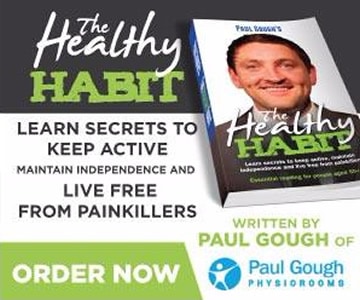So two weeks ago I wrote about Steven Gerrard and his “hamstring injury” and a since then, I’ve been flooded with emails from readers wanting to know more about how to successfully recover from one.
So, with that in mind, here is an EXACT week by week, step by step recovery plan that I used for professional footballer with a grade 2 strain and something for you to follow, if it ever happens to you:
Week1:
This is always about Ice and rest. Not much else. Typically, I’d advise a pro athlete to go swimming, take one or two gentle walks and when possible, work on core stability exercises with a balance ball. From a physio point of view – after about day 5 I’d begin some deep massage and very gentle stretching.
Week 2
Ice continues – often up to day 10 depending upon ho much bleeding has taken place and how badly damaged the muscle tear is.
Typically, one of my players would now be exercising on a bike, swimming would continue and towards the end of week 2, I’d be aiming to have the athlete doing some very gentle jogging. The player or athlete can expect to feel some form of burning sensation, but as long as it isn’t “cramping” or “biting” this is fine – and a good thing.
From a physio point of view – massage is now vital.
It’s now that the scar tissue build up is “dangerous” and if the massage isn’t done, it’s the number 1 reason for hamstrings tearing again in the first two weeks back to running or playing.
Week 3
Ice has stopped. More heat is being used rather than ice in this stage. Stretching is now vital. I’d be recommending the athlete to attend Yoga classes, increase the amount of Pilates exercises and that he or she be working on their balance (using an exercise/gym ball).
Fitness levels are increased significantly. Swimming, cycling, long distance running is stepped up. And the athlete may or may not be asked to be doing three quarter pace running by now.
From a physio point of view – hands on treatment is vital, massage continues and work on the gluteal muscles and lower back is essential to prevent future reoccurrence.
Week 4
Athlete 90% fit. CV work increases and a return to practice and full drills is possible and the goal, by the end of week 4. The athlete is put through drills that will include sprints, shuttles and plyometric work. From a physio point of view – hands on massage continues, PNF stretching is vital and passive and active stretching is stepped up.
Week 5
Athlete returns to sport. Fitness and performance work increases. From a physio point of view – massage continues to prevent scar tissue build up and stretching is continued before, during and after training sessions.
Note: Daily Hands-on massage will be need for approximately another 2-3 weeks to prevent scar tissue (collagen) tightening the muscles.
To sum up: Take it very easy early on, stretch and mobilise the injury at just the right time and no hamstring can ever recover fully with out deep massage. When jogging or running for the first time…a *burning* sensation is to be expected and is OKAY. There’s no need to stop. But you must stop if it cramps or feels as though the muscle is “biting” sharply.
Too much rest in the first few weeks will increase the likelihood of re-injury. Don’t be fooled by the lack of pain after two weeks. It does not mean you are fit to play or run and if you haven’t followed the rules listed above, you will damage the muscle again sometime soon.
For more tips like this, visit: www.paulgoughphysio.com/sports-injury-clinic

